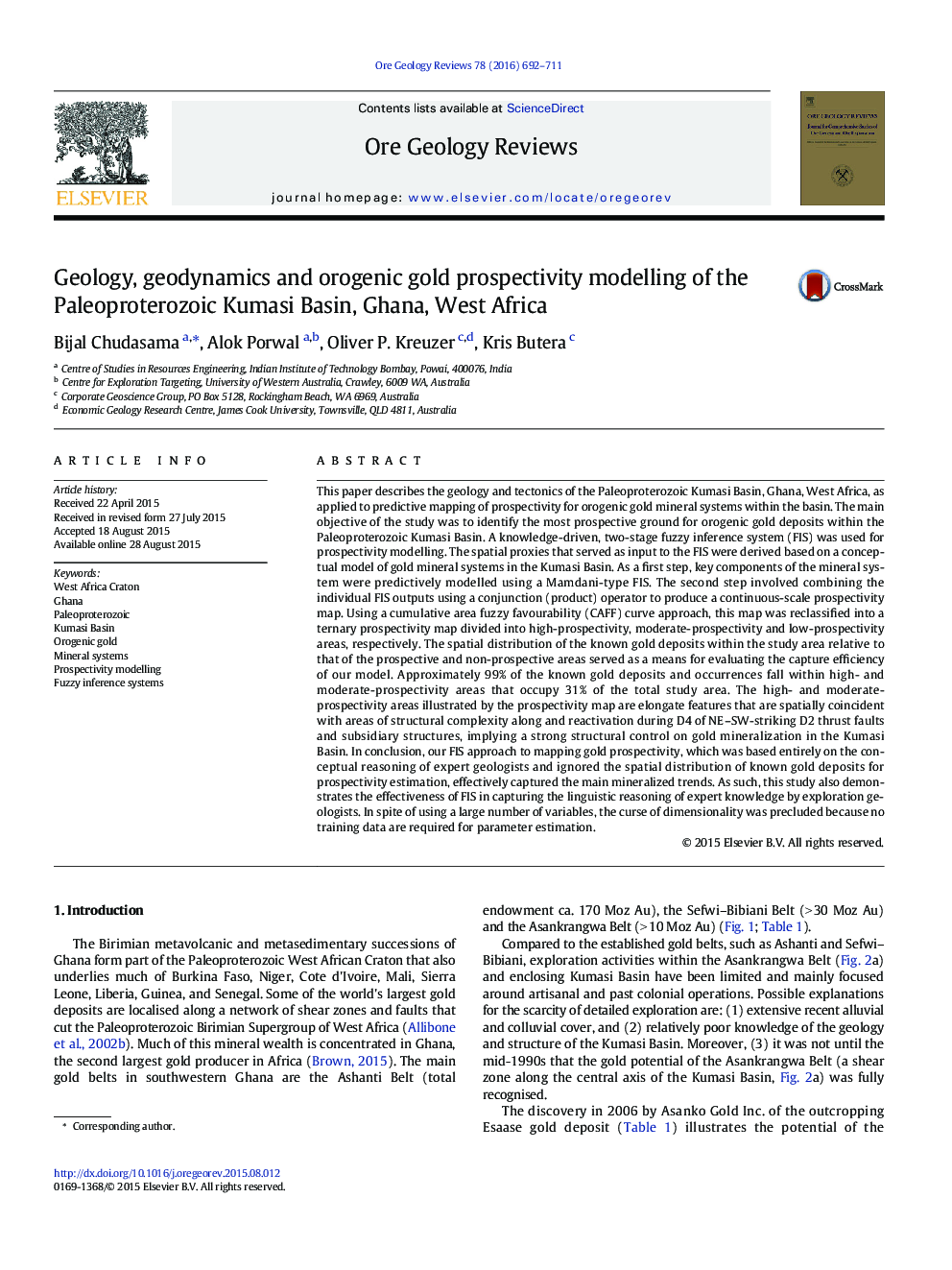| کد مقاله | کد نشریه | سال انتشار | مقاله انگلیسی | نسخه تمام متن |
|---|---|---|---|---|
| 4696883 | 1637228 | 2016 | 20 صفحه PDF | دانلود رایگان |
• A geological and geodynamic synthesis of Palaeoproterozoic Kumasi Basin is presented.
• A model of orogenic gold mineral systems in the Kumasi Basin is presented.
• A fuzzy inference system based orogenic gold prospectivity modelling of the Kumasi basin is presented.
This paper describes the geology and tectonics of the Paleoproterozoic Kumasi Basin, Ghana, West Africa, as applied to predictive mapping of prospectivity for orogenic gold mineral systems within the basin. The main objective of the study was to identify the most prospective ground for orogenic gold deposits within the Paleoproterozoic Kumasi Basin. A knowledge-driven, two-stage fuzzy inference system (FIS) was used for prospectivity modelling. The spatial proxies that served as input to the FIS were derived based on a conceptual model of gold mineral systems in the Kumasi Basin. As a first step, key components of the mineral system were predictively modelled using a Mamdani-type FIS. The second step involved combining the individual FIS outputs using a conjunction (product) operator to produce a continuous-scale prospectivity map. Using a cumulative area fuzzy favourability (CAFF) curve approach, this map was reclassified into a ternary prospectivity map divided into high-prospectivity, moderate-prospectivity and low-prospectivity areas, respectively. The spatial distribution of the known gold deposits within the study area relative to that of the prospective and non-prospective areas served as a means for evaluating the capture efficiency of our model. Approximately 99% of the known gold deposits and occurrences fall within high- and moderate-prospectivity areas that occupy 31% of the total study area. The high- and moderate-prospectivity areas illustrated by the prospectivity map are elongate features that are spatially coincident with areas of structural complexity along and reactivation during D4 of NE–SW-striking D2 thrust faults and subsidiary structures, implying a strong structural control on gold mineralization in the Kumasi Basin. In conclusion, our FIS approach to mapping gold prospectivity, which was based entirely on the conceptual reasoning of expert geologists and ignored the spatial distribution of known gold deposits for prospectivity estimation, effectively captured the main mineralized trends. As such, this study also demonstrates the effectiveness of FIS in capturing the linguistic reasoning of expert knowledge by exploration geologists. In spite of using a large number of variables, the curse of dimensionality was precluded because no training data are required for parameter estimation.
Journal: Ore Geology Reviews - Volume 78, October 2016, Pages 692–711
